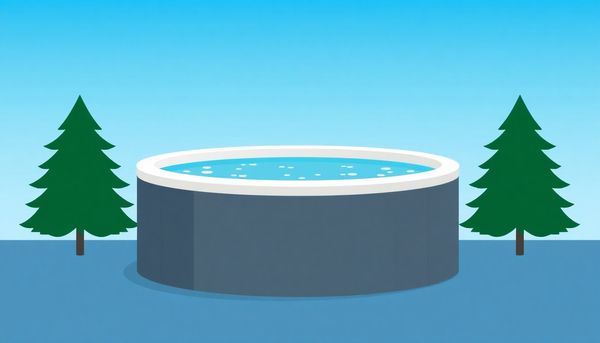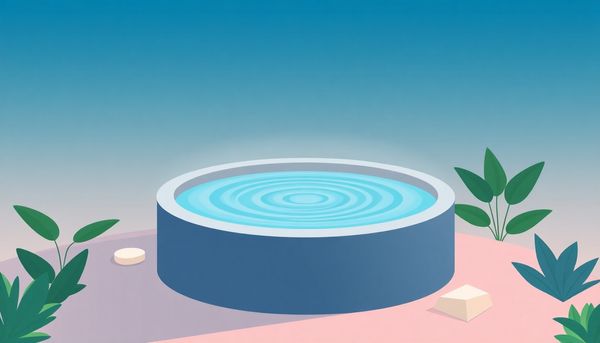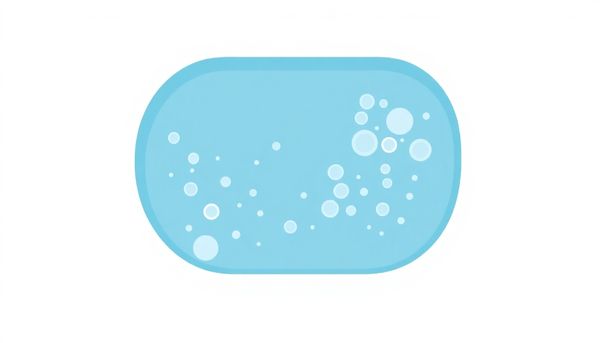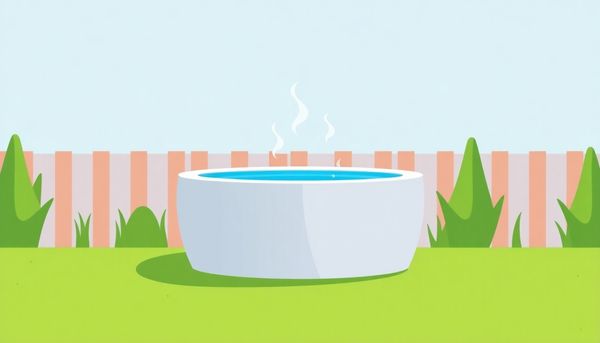Optimize Hot Tub pH: Key Tips for Relaxation & Equipment Care
May 28th, 2024
May 28th, 2024
Stepping into a hot tub should be a moment of pure relaxation. It's where the world fades and tranquility reigns. However, this sanctuary of bubbles and warmth can transform into a chemistry conundrum if the water’s pH level isn't just right. A balanced pH is key, not only for your skin's comfort but also for preserving the integrity of the hot tub itself. Too low, and the water becomes acidic, potentially causing irritation or even damage to the tub’s components.
Years ago, I faced this very issue with my own hot tub. The water seemed fine at first glance, but after a few dips, I noticed my skin feeling unusually dry and a slight metallic smell lingering in the air. After some research, it became clear that a low pH was the culprit. Many hot tub owners encounter this, yet solutions are within reach, often with simple household items or products available at any pool store.
Each hot tub has its own personality, and understanding its needs is part of the ownership journey. Whether you're a seasoned owner or someone new to the bubbling waters, grasping the basics of pH regulation can make all the difference. As we explore the steps to raise pH levels effectively, you'll gain the confidence to maintain that perfect balance, ensuring your hot tub remains a haven of relaxation.

Tackling the mystery of having just the right pH in your hot tub is a bit like finding the perfect seasoning for a dish. You know it's off when something doesn’t feel quite right. A reliable way to address low pH levels is by utilizing a pH increaser. This handy chemical, often featuring sodium carbonate (commonly known as soda ash), is specifically designed to lift your hot tub's pH without meddling too much with other water chemistry elements.
In my experience, clutching a small bottle of pH increaser feels somewhat empowering, like holding the key to a silky soak. The product is straightforward—add a little, test, then adjust as needed. No need to venture into the laundry aisle for Washing Soda, which, although similar in composition, is more than you'd typically require for hot tub upkeep. Instead, opt for the precisely portioned pH increaser; it’s much more practical and efficient.
Once you've added the increaser, give the water a few minutes to circulate and then check the levels with a test strip. You’re aiming for that sweet spot between 7.4 and 7.6 on the pH scale. Not only does this range ensure the comfort of everyone taking a dip, but it also prolongs the life of your equipment by preventing corrosion. Achieving this balance transforms your hot tub into a haven of relaxation, free from the stark bite of acidity or irritation.
Navigating the world of hot tub maintenance can be a daunting task if not approached with precision. One critical step is ensuring the proper dosage when using a pH increaser, typically made of sodium carbonate (soda ash). The importance of this cannot be overstated, as incorrect amounts can lead to either insufficient correction or an overcorrection of your hot tub’s water chemistry. Such imbalances could leave you with either acidic water that eats away at the tub’s delicate surfaces or alkaline water that is cloudy and less effective at sanitization.
Before adding any chemical, first, be certain of your hot tub’s water capacity. Knowing exactly how many gallons it holds is crucial. Once verified, start by using a test strip to ascertain the current pH level, which should ideally sit between 7.4 and 7.6. A pH increaser package usually comes with a dosage chart based on water volume and current pH, so consult this to guide your additions.
Adding the increaser in small increments is a wise strategy. Stir the water thoroughly after each addition and test again after five minutes. It's easy to forget, but remember to run the jets to help the chemical disperse more evenly. This methodical approach prevents you from overshooting your target pH. By patiently tweaking the levels, you ensure not only a perfect soak but also the longevity of your hot tub’s components.
Hot tubs, those sanctuaries of warmth and relaxation, hide a secret nemesis: erosion caused by low pH levels. When the pH drops, the water turns acidic, transforming your oasis into a corrosive bath that slowly eats away at the components of both the tub and its plumbing. A friend of mine, who spent her weekends unwinding in her hot tub, discovered this the hard way. Ignoring her tub's low pH led to a costly repair for a corroded heater coil.
Each piece of a hot tub, from the pump to the jets, plays a crucial role in creating that perfect soak. But acidic water will gradually erode metal components, leading to unnecessary wear and tear. Such degradation doesn't just stop at the surface; it goes deeper, possibly causing leaks or even malfunction. The solution? Regular monitoring and adjusting of your water's pH with a handy pH increaser, preventing the quiet destruction of your beloved equipment.
Equipping yourself with test strips helps you stay on top of these essential water chemistry levels. By maintaining a pH between 7.4 and 7.6, you ensure not only the longevity of your equipment but also optimize the performance of sanitizers like chlorine and bromine. By keeping your hot tub's pH in check, you're not just protecting a leisure investment, you're also safeguarding the many hours of blissful soaking it promises.
Balancing water in your hot tub is akin to tuning a musical instrument; it requires precision and understanding. Achieving harmony in your water chemistry involves more than just adjusting the pH—total alkalinity plays a crucial role. Think of it as the safety net for your pH levels, stabilizing them and ensuring that any change is gradual rather than abrupt.
Consider this: I once ignored the total alkalinity in my own hot tub, focusing solely on pH, and found myself in a constant battle with fluctuating readings every time someone took a dip. The solution? Baking soda. This simple household item can elevate both total alkalinity and pH, providing a more stable environment. A sprinkle of soda bicarbonate from the kitchen pantry can transform your tub water into a welcoming oasis.
Moreover, frequent testing is key to maintaining this balance. Weekly checks with test strips can help you monitor changes and nip issues in the bud. While professional chemists might opt for fancy gadgets, test strips offer a straightforward, cost-effective method for homeowners. Once you start noticing the stability brought about by balanced alkalinity and pH, you’ll appreciate the smoother skin feel and the enhanced performance of your sanitizers. This not only extends the lifespan of your hot tub components but also enhances your overall soaking experience.

Ensuring your hot tub maintains that perfect pH level is crucial, but it doesn't end with just adding chemicals. Testing and adjusting is an art that, once mastered, keeps your spa experience blissfully trouble-free. First, check your hot tub's pH with a test strip. This simple tool is your primary compass in navigating the world of water chemistry. Dip the strip in the water, wait a few seconds, and compare the color match on the bottle. If the reading indicates a pH level outside the ideal range of 7.4 to 7.6, it's time for action.
Start by adding a pH increaser like sodium carbonate, known as soda ash. For those who prefer a more natural approach, baking soda is your friend, especially if you're also tackling low alkalinity. Add it gradually, sprinkling it over the water while the jets are running to ensure even distribution. After mixing, give it a few minutes and test the water again. Patience is key here; adjusting pH isn’t a race.
Remember, the interplay between pH and total alkalinity is akin to a delicate dance. If your alkalinity is on point but the pH is still off, add a bit more increaser. On the flip side, if you’ve gone overboard, and your pH is too high, don’t panic. Cloudy water might greet you, but rest assured, it’s temporary. Next time, adjust in smaller increments.
By regularly testing and making small tweaks, you not only keep your hot tub in top shape but also enhance the longevity of its components. So, embrace the process and become the master of your hot tub’s chemistry.
In your quest for the perfect soak, managing your hot tub's pH levels becomes a subtle art. When the water becomes too acidic, it’s time to reach for the pH increaser, a trusty ally sold in small bottles, specifically crafted for hot tubs. Sodium carbonate, or soda ash, serves as the active ingredient. It's a common component you might recognize from your laundry aisle, though you’ll probably never need the vast quantities that washing soda offers.
A friend of mine once had issues with her hot tub's pH levels plummeting during a rainy month. She decided to try a pH increaser and was pleasantly surprised by how straightforward the process was. Just sprinkle the recommended amount into your tub while the pumps are running, and then let the water circulate thoroughly for about 15 minutes. It’s like crafting a perfect cup of tea—patience is key.
Always make sure to check your pH levels afterward with a test strip. This ensures everything's balanced and your tub won’t turn into a science experiment gone wrong. Adjust slowly, and remember, a stable pH (ideally between 7.4 and 7.6) creates a comfortable soaking experience, safeguards your hot tub’s components, and enhances the effectiveness of chlorine or bromine. With the right touch, your hot tub remains a haven of relaxation rather than a source of frustration.
While the prospect of balancing alkalinity and pH in a hot tub might sound daunting, mastering this skill can lead to a more enjoyable soak. Imagine alkalinity as the steadfast guardian of your pH levels; without its stabilizing presence, even a perfectly adjusted pH can quickly go awry with a splash or a chemical addition.
In my own hot tub adventures, I discovered that maintaining a proper alkalinity level, generally between 100 to 150 parts per million (ppm), helps keep the pH from fluctuating wildly. This is crucial because both low and high pH levels can be equally troublesome, causing irritation and equipment damage. Once, after a particularly rainy week, I noticed my hot tub water turning cloudy and my skin feeling dry after each soak. A quick test revealed a dip in both alkalinity and pH levels. A simple addition of baking soda brought things back into balance, saving the day and my skin.
When you aim to adjust your hot tub's pH, remember that raising alkalinity with baking soda can also nudge the pH upwards. However, should the pH still stubbornly refuse to hit that sweet spot (7.4 to 7.6), a pH increaser such as sodium carbonate becomes your go-to ally. It’s a precise dance, this balance of alkalinity and pH, but with a bit of practice, your hot tub will be the perfect oasis of relaxation, free from the concerns of chemistry.
Regular water testing is the unsung hero of maintaining a healthy hot tub environment. Without it, you're essentially driving blind, guessing at the condition of your water. My friend once learned this the hard way after neglecting his testing routine. His water turned a lovely shade of green, and it wasn’t because he was going for a St. Patrick's Day theme.
To prevent such mishaps, using test strips at least once a week is crucial. These strips are user-friendly and provide a quick snapshot of your hot tub's pH and alkalinity levels. While digital probes and liquid kits offer precision, test strips are sufficient for most homeowners, offering a blend of convenience and accuracy. They're like your GPS for water chemistry, guiding you to that sweet spot where the pH is between 7.4 and 7.6.
It’s not just about the pH, though. Regular testing also keeps an eye on total alkalinity, the often-overlooked sibling in the water chemistry family. Alkalinity acts as a buffer, ensuring that your pH doesn't go on a roller coaster ride with every splash or chemical addition. Once you get into the rhythm of regular testing, adjusting your water chemistry becomes second nature, making every soak a pleasure rather than a guessing game. And trust me, nothing beats the peace of mind knowing your water is perfectly balanced, ready for you whenever you need a relaxing escape.
In the world of hot tub maintenance, sidestepping common pH blunders can save a lot of hassle and expense. One frequent mistake involves neglecting to test the water regularly. Just like checking your tire pressure, it needs to be done often—at least once a week. By missing this crucial step, you might end up with water that's too acidic or too basic, leading to discomfort and potential damage.
Another common error is adding too much pH increaser at once. We've all been there, thinking more is better. However, over-adjusting can swing your water to the opposite extreme, resulting in high pH levels that cause scale buildup and inefficient sanitizer performance. Instead, add the increaser gradually, testing in between to hit that sweet spot of 7.4 to 7.6 pH.
Misjudging the relationship between pH and alkalinity is another pitfall. Alkalinity acts as a buffer for pH, so if it's off, your pH will likely be unstable. Always adjust alkalinity first using baking soda before tackling pH levels; this simple step can make a world of difference in maintaining water balance.
Finally, using inappropriate products, like laundry-grade washing soda, can complicate matters. Stick with chemicals designed for spa use to ensure safe, effective treatment. Keeping these missteps in mind ensures a pleasant, trouble-free soak every time.

Balancing alkalinity in your hot tub is akin to laying a solid foundation before constructing a house. Without it, any attempt to adjust the pH might crumble as soon as you step in or introduce other chemicals. When considering water chemistry, think of alkalinity as the buffer that cushions your pH levels from drastic shifts. Often, we rush to correct pH, overlooking how tightly it is interwoven with alkalinity.
A few years back, I hosted a backyard gathering, proudly showcasing my newly acquired hot tub. Eager to impress, I meticulously adjusted the pH, but neglected to check the alkalinity. As the night wore on, the water, initially crystal clear, became murky and uninviting. It taught me that without proper alkalinity, pH levels are a fickle friend, quick to wander off course.
To stabilize your hot tub’s chemistry, start by measuring the total alkalinity using a test strip. Ideally, it should sit between 100 and 150 ppm. If it's lagging, reach for baking soda—yes, the same trusty box from your kitchen cabinet. Adding it not only elevates alkalinity but gives your pH a gentle nudge upward. Start with modest amounts, stirring the water gently to ensure even distribution. Once your alkalinity is steady, revisit the pH. This two-step approach safeguards against the rollercoaster of pH fluctuations and ensures a soothing soak every time.
Maintaining the right pH in your hot tub is like keeping your favorite recipe perfectly seasoned; too little or too much can spoil the experience. When your hot tub's pH dips below the ideal 7.4 to 7.6 range, you're inviting acidic waters that can wreak havoc on both your skin and the tub's internal parts. This not only accelerates wear and tear but also reduces the effectiveness of your sanitizers, like chlorine or bromine, making your tub less hygienic.
The easiest solution? A pH increaser, more commonly known in scientific circles as sodium carbonate or soda ash. This straightforward powder adjusts the acidity without complicating the rest of your water chemistry. It's a quick fix, much like how a pinch of salt can transform a bland soup into a culinary delight. Simply sprinkle it in with the tub's circulation system running, and watch as your pH levels begin to stabilize.
Personal anecdotes might include that time you invited friends over, only to realize the pH was off, resulting in itchy skin and an unexpectedly short soak. The lesson? Regularly checking your pH can save you from these awkward moments and keep your hot tub as inviting as a warm hug on a winter's day. By understanding the interplay between pH and alkalinity, you're not just maintaining a hot tub; you're crafting an oasis of relaxation.
Alkalinity increasers can be your secret weapon in maintaining that perfect hot tub oasis. Think of alkalinity as the unsung hero in water chemistry, quietly keeping your pH level steady. Without it, your pH would be as unpredictable as a soap opera plot, swinging wildly with every splash or chemical addition.
Instead of reaching for a magic wand, hot tub owners can rely on a straightforward solution: alkalinity increasers, often just baking soda in disguise. Yes, the same baking soda that keeps your fridge fresh or aids in baking cookies can help balance your spa water! When the alkalinity of your hot tub dips below the ideal range of 100 to 150 ppm, a sprinkle of baking soda can gently nudge it back into harmony.
Here's a tip: add the increaser while the hot tub jets are running on low to ensure it mixes evenly throughout the water. After a brief five-minute wait, recheck your levels. You may find that both alkalinity and pH have climbed to their happy place.
While it might be tempting to overdo it, moderation is key. Too much can result in cloudy water—an aesthetic hiccup more than a crisis. If that happens, patience is your friend, as the water will naturally clear up. And remember, gloves and goggles are your best friends when handling any hot tub chemicals. Your skin will thank you later!
Balanced water is not just about comfort; it’s a guardian for your hot tub’s longevity. When the pH levels in your tub dip too low, the water turns acidic, slowly attacking the very components that make your soaks so enjoyable. It's akin to inviting a tiny army to erode your investment over time. Imagine relaxing in your hot tub, only to discover a malfunction due to corroded pipes or eroded surfaces. Not the kind of surprise anyone wants after a long day.
A friend of mine learned this lesson the hard way. After neglecting her hot tub’s pH balance, she faced hefty repair bills. The acidic water had done a number on her heater element, leading to unexpected costs and downtime. By simply maintaining a balanced pH, she could have avoided these issues altogether.
Maintaining pH isn’t just about avoiding damage; it also optimizes the efficiency of your sanitizers, like chlorine or bromine. These sanitizers work best in balanced conditions, effectively keeping your water clean and safe. Regular checks with test strips are quick, and adjusting the pH with a pH increaser is straightforward.
Protect your investment by ensuring the water isn’t too acidic or too alkaline. It’s the difference between many carefree evenings and the hassle of costly repairs. After all, isn’t the whole point of a hot tub to reduce stress, not add to it?

When you’re looking to tweak the pH of your hot tub without breaking the bank, consider the humble powerhouse in your kitchen cupboard: baking soda. This everyday staple, known scientifically as sodium bicarbonate, offers a simple yet effective solution for elevating both the alkalinity and pH levels in your spa water. Unlike pH increasers specifically designed for hot tubs, baking soda does not carry a hefty price tag and is readily available in most households.
Baking soda primarily boosts alkalinity, which, as a delightful side effect, nudges the pH upwards. It's like having a two-for-one deal at the grocery store. To give you an idea of how it works: if your test strip reveals a pH below the ideal 7.4 to 7.6 range and low alkalinity, a sprinkle of baking soda could be the hero in your spa saga. Start by adding small amounts, around one tablespoon per 100 gallons, and retest your water to avoid overshooting the mark.
Remember the time you over-salted a pot of soup? Just like in cooking, you can always add more, but you can't take it out easily. The beauty of using baking soda lies in its gradual approach, allowing for steady adjustments without drastic swings in chemistry. Plus, there's something satisfying about using a natural ingredient to solve a problem. Next time you face a low pH dilemma, grab that orange box of baking soda and watch your hot tub water find its perfect balance.
The trusty box of baking soda isn't just for baking cookies and freshening refrigerators; it's a versatile tool in maintaining your hot tub's health. While it might seem like an easy fix, there's a method to using it safely. Picture yourself at your kitchen counter, spoon in hand, ready to enhance your spa experience. Start small. A little goes a long way with baking soda, especially in a hot tub.
Begin by testing your water with a test strip to gauge the pH and total alkalinity. If both are on the lower side, baking soda can gently nudge the readings up. For every 100 gallons of water, add about one tablespoon of baking soda. Sprinkle it directly into the water with the jets running on low, ensuring an even mix.
Give it a few minutes to circulate before conducting another test. This step is crucial as it prevents overcorrection, which might lead to other issues like cloudy water. Also, avoid the temptation to add too much at once. Patience here is key.
A friend of mine once rushed the process and ended up with water resembling a milky way. While not hazardous, it’s definitely not the ambiance anyone's after. Remember, your goal is to relax, not reenact a science experiment gone awry. With careful handling and the right amount, baking soda can be a straightforward, effective ally in maintaining your hot tub’s perfect soak.
Navigating the world of hot tub maintenance might seem daunting, but achieving the ideal balance of alkalinity and pH can be a straightforward process. Think of alkalinity as the unsung hero that stabilizes your hot tub’s pH levels and prevents dramatic shifts. Without proper alkalinity, those well-adjusted pH readings can quickly fluctuate with the slightest changes in water composition or chemistry.
When dealing with low alkalinity, a simple household solution like baking soda can come to the rescue. This humble powder, often used for baking or cleaning, effectively raises both alkalinity and pH. It’s affordable and readily available, making it a favorite among hot tub enthusiasts. Just a modest amount can significantly improve water stability and protect your tub’s components from acidic damage.
In my own experience, I found that dissolving baking soda in a bucket of warm water before gradually adding it to the hot tub ensures even distribution and prevents cloudiness. It’s a simple tip that can make a big difference in maintaining clear and inviting water. Once your alkalinity is within the desired range of 100-150 ppm, the pH should naturally align itself. However, if your pH remains stubbornly low, a targeted pH increaser like sodium carbonate will provide that extra push. Remember, keeping your pool water balanced is the key to comfortable and efficient hot tub use, saving you both time and money in the long run.
Understanding the nuances of water chemistry in your hot tub is akin to mastering a delicate dance. Maintaining optimal water chemistry not only involves adjusting pH but also ensuring the balance of total alkalinity and other key elements. Many hot tub owners might focus solely on pH increasers to address acidity, yet it’s crucial to appreciate how interconnected these factors are. A balanced environment ensures your sanitizer works effectively, prolonging the life of your equipment and offering a more pleasant soaking experience.
Consider a time when you’ve splashed water onto the deck. If the pH isn't balanced, it might feel sticky or even burn, a clear signal that the water chemistry needs attention. By regularly using test strips, you can get a quick overview of your hot tub’s health. These strips provide insights into everything from pH and alkalinity to total hardness. Alkalinity acts as a buffer, keeping the pH stable, which is especially important after adding chemicals or when multiple people use the hot tub.
In practice, it’s a bit like baking a cake. Each ingredient must be measured correctly for the perfect result. Overlooking alkalinity while adjusting pH is like forgetting the baking powder – it won’t rise properly. Consistent monitoring and adjustment will save you from costly repairs and ensure every soak is as soothing as intended.

Owning a hot tub feels like having your personal paradise just a few steps away. But, like any paradise, it requires some care to maintain its tranquility. Safeguarding your hot tub from the ravages of low pH isn’t merely an option—it's a necessity. A low pH level can transform your soothing spa into a corrosive nightmare, damaging the surfaces and plumbing over time. This is where knowing how to properly balance your water becomes crucial.
One might recall a time when they ignored the subtle signs of low pH—fizzing sounds around metal components, a slightly rough surface beneath the water. These are whispers of warning. Using a pH increaser, which contains sodium carbonate, can avert disaster. This compound raises the pH, protecting the delicate equilibrium of your tub's environment.
Interestingly, maintaining the proper pH isn't just about preserving your equipment. It also ensures that your chlorine or bromine works effectively, keeping the water clean and safe for every soak. This means fewer chemicals, less maintenance, and ultimately, more time to enjoy your tub.
Consider the test strip your hot tub’s best friend. By testing weekly, adjustments can be made before any real damage begins. This small habit is your shield against costly repairs and ensures every soak is as refreshing as the last. Keeping tabs on your tub’s pH isn’t just maintenance—it’s about securing peace of mind and a long life for your portable oasis.
Tuning the water chemistry in your hot tub is like finding the perfect harmony in a song; both alkalinity and pH play essential roles. Alkalinity acts as a stabilizer, ensuring that the pH doesn't fluctuate wildly with every splash or chemical addition. Without the right level of alkalinity, your pH levels could take a nosedive or soar, much like an unpredictable roller coaster.
Let’s think of alkalinity as the buffer that absorbs the shocks of pH changes, keeping everything in a more predictable range. For instance, if you’ve ever added a bit too much sanitizing agent and noticed immediate changes in pH, it's likely because the alkalinity was too low. By maintaining proper alkalinity, ideally between 100-150 ppm, you give your pH a more stable ground to stand on.
Now, how do you achieve this stability? Baking soda is your ally in this quest. Known among hot tub enthusiasts as a gentle giant, it raises alkalinity without causing drastic swings in pH. Adding baking soda can be as simple as a sprinkle into the bubbling water, watching as it dissolves and begins its work. Then, after a few moments, test the water again, making adjustments as needed.
Achieving this balance transforms your hot tub from merely a backyard feature to a sanctuary of soothing waters. With balanced chemistry, not only does the water feel silky and inviting on your skin, but your sanitizers work more effectively, protecting your investment and enhancing your relaxation experience.

This article provided insights into maintaining your pool. Start your pool care journey today!
Want to become a pool maintenance expert? Our free Pool School course covers everything you need to know about pool care. From basic maintenance to advanced troubleshooting, you'll learn how to:
Join over 10,000 pool owners who have already transformed their pool care routine. Get started with our free Pool School course today!